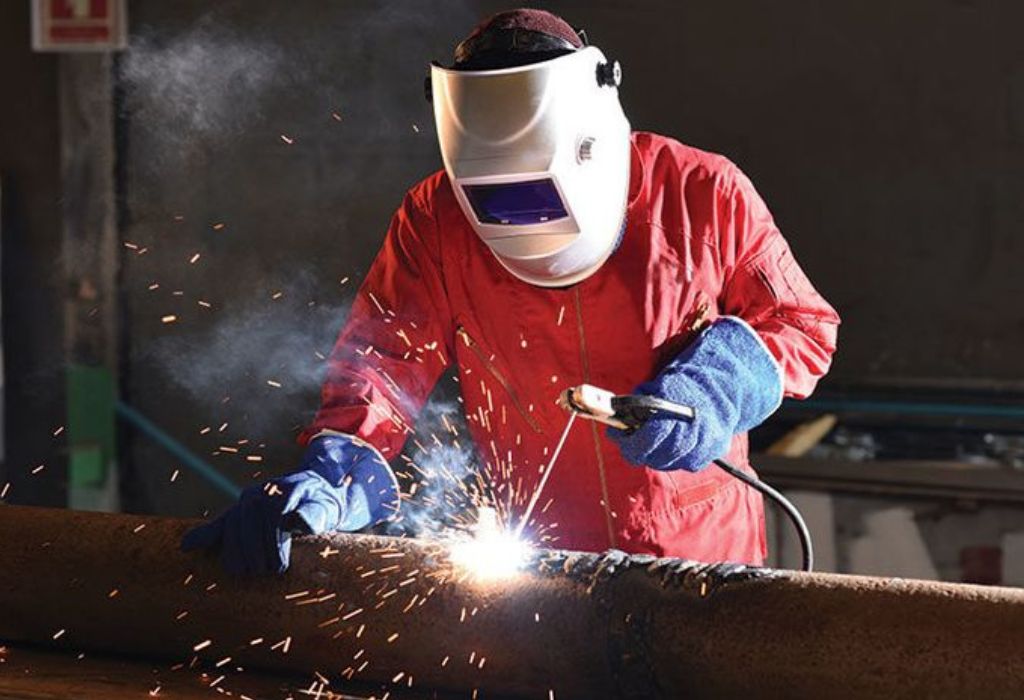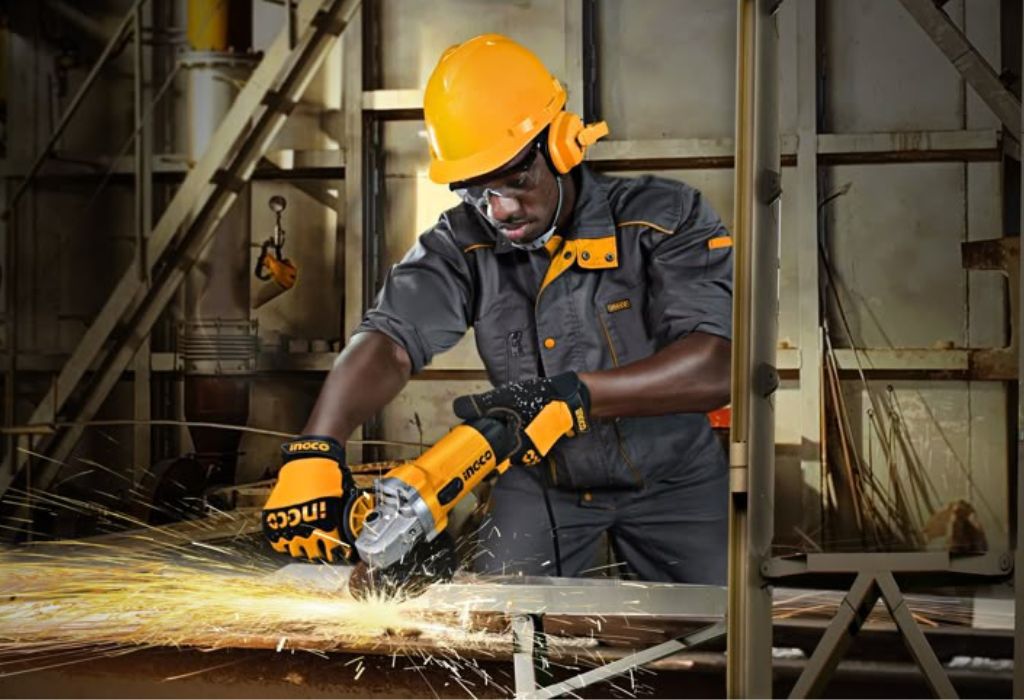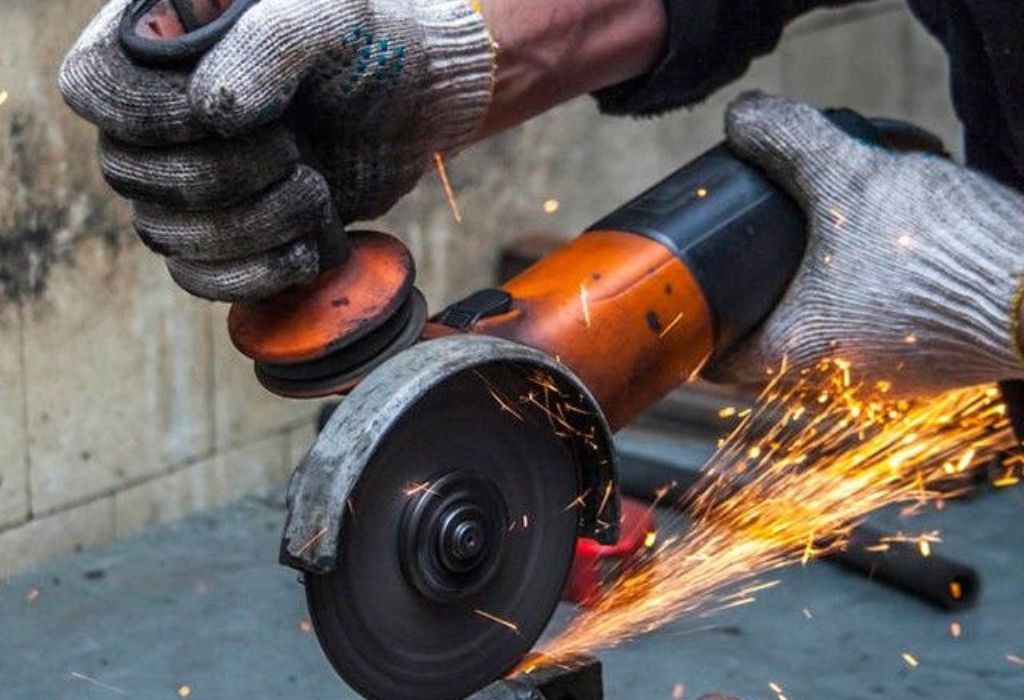Imagine standing in your garage, staring at a shiny new welding machine — gloves on, helmet down, but completely unsure where to start. That moment of curiosity mixed with fear is something almost every beginner welder experiences.
Welding may look intimidating at first glance, but with the right guidance, even absolute beginners can start creating strong, clean welds in a single afternoon.
In reality, welding is both an art and a science. It combines electrical energy, metal, and heat to join materials that can last decades. But without proper knowledge, it can also be risky. According to the U.S. Bureau of Labor Statistics, over 500,000 workers face welding-related injuries each year, with burns, eye damage, and fume exposure among the most common hazards (source).
That’s why understanding how to use a welding machine for beginners safely is more important than just learning how to create a bead.
The good news? You don’t need to be a professional fabricator to get started.
With a bit of practice, the right setup, and some patience, you can begin welding at home for small projects, car repairs, or DIY creations. This guide will walk you through every step — from equipment setup to striking your first arc — so you can learn to weld safely, confidently, and effectively.
What You Need Before You Start Welding

Before switching on the welder, safety comes first. Preparation and setup determine how smooth and safe your first experience will be.
A beginner should focus on protective equipment, workspace safety, and understanding the tools before creating a single spark.
What PPE is essential for beginner welders?
Auto-darkening helmet (shade 10–13), fire-resistant jacket, leather gloves, steel-toe boots, and ear protection. These prevent burns and UV exposure.
Do beginners need ventilation?
Absolutely. Welding fumes can be toxic — always work in a well-ventilated space or use a fume extractor to avoid respiratory issues.
What extra tools should I have?
Keep an angle grinder, wire brush, chipping hammer, and a fire extinguisher nearby.
Which welding type is easiest to start with?
MIG or flux-cored welding is best for beginners because it’s cleaner and easier to control than stick or TIG.
Why is surface preparation important?
Rust, paint, and oil can cause weak welds and excessive spatter — clean surfaces make stronger joints.
Understanding the Welding Machine
Your welding machine might look complex, but it only has a few key parts that matter for beginners: power switch, amperage knob, ground clamp, electrode holder or torch, and display panel.
Most machines display voltage, amperage, and duty cycle information — terms you’ll hear often.
What is duty cycle?
It’s the percentage of time a welder can run continuously within a 10-minute period before overheating. A 30% duty cycle at 90A means you can weld for 3 minutes, then let it cool for 7.
Why is polarity important?
It controls the direction of electrical flow. For MIG, use DCEP (Direct Current Electrode Positive); for flux-cored, use DCEN (Direct Current Electrode Negative).
What happens if you exceed the duty cycle?
The welder overheats and automatically shuts off, which can damage internal components if ignored.
Which settings should beginners focus on?
Amperage (heat), wire feed speed, and voltage are key to controlling penetration and bead shape.
Safety and Power Setup
Before welding, check your electrical supply and environment. Small 120V inverters work for home use, but make sure you’re not overloading a household circuit.
Can I plug a welder into a regular socket?
Yes, most beginner machines work on standard 120V outlets — just ensure a 20A breaker or dedicated circuit.
Where should I attach the ground clamp?
Always to clean, bare metal near your weld area for a complete electrical circuit.
Do I need to wear safety glasses under my helmet?
Yes, sparks can enter from below the helmet when grinding or tacking metal.
What’s the ideal working surface?
A flat, non-flammable metal table or welding bench is safest for beginners.
Choosing the Right Welding Process
There are four main types of welding: MIG, Flux-Cored, Stick, and TIG. Each has unique pros and cons, but beginners should focus on the first two.
Which welding method is easiest for beginners?
MIG (Metal Inert Gas) is the best starting point because it’s semi-automatic and creates clean welds quickly.
When should you use flux-cored welding?
When working outdoors — it doesn’t need shielding gas and performs well in windy conditions.
What about stick welding?
It’s more rugged and cheaper but harder to master due to constant arc restarts.
Is TIG suitable for beginners?
TIG gives precise, clean welds but demands better hand control and coordination — it’s usually for advanced users.
Preparing the Material
Clean and well-fitted material ensures a strong, neat weld. Poor prep causes porosity, weak joints, and spatter.
Why clean the metal before welding?
Contaminants cause bubbles and poor fusion — grind or wire brush to shiny metal before welding.
How do you align materials properly?
Use clamps or magnets to hold the workpieces tight, leaving consistent gaps for penetration.
What are tack welds?
Small, temporary welds that hold parts together before the main weld. Place them every few inches.
Do I need to bevel thicker metal?
Yes, anything thicker than 1/8 inch should be beveled at 30–45° to ensure deep penetration.
MIG Welding Setup for Beginners
MIG welding is often called the “glue gun of welding” because it’s easy to control and great for thin to medium steel. It uses a continuous wire feed and shielding gas (usually 75% Argon / 25% CO₂).
How do I set up a MIG welder?
- Load the correct wire size (0.023″–0.030″).
- Set polarity to DCEP.
- Attach gas regulator and set flow to 20–25 CFH.
- Check wire feed and voltage settings using the chart on the welder’s lid.
Should I push or pull the gun?
Push for cleaner, flatter welds. Pulling creates more penetration but more spatter.
What does a good weld sound like?
A consistent “bacon sizzling” sound — too loud means excessive voltage; too quiet means poor wire feed.
What’s the right stick-out length?
Keep the tip about 3/8 inch from the workpiece for stable arcs.
Flux-Cored Welding Basics

Flux-cored (FCAW) welding doesn’t require gas; the wire’s flux coating creates a protective shield. It’s excellent for outdoor work or windy environments.
Why use flux-cored wire?
It’s portable, cheaper, and ideal for dirty or rusty metal surfaces.
What’s the downside?
More spatter and slag cleanup compared to MIG.
How do I clean after flux-core welding?
Chip off slag with a hammer, then wire brush for a shiny finish.
Which wire should beginners use?
E71T-GS wire works great for single-pass mild steel on 120V welders.
Stick Welding (SMAW) for Beginners
Stick welding uses an electrode rod coated in flux. When struck, the rod melts and deposits filler metal while flux protects the puddle.
Why choose stick welding?
It’s cheap, powerful, and works on dirty metal or outdoor jobs.
What’s the easiest rod to start with?
E6013 or E6011 rods, depending on whether you need smooth or deep penetration.
What amperage should I start at?
Try 80–90 amps for a 3/32″ electrode, then adjust until the arc runs smoothly.
Why is rod storage important?
Moisture ruins rods — keep them sealed or in a rod oven.
TIG Welding Overview
TIG (Gas Tungsten Arc Welding) gives the cleanest and strongest results but is more advanced. It requires both hands — one for the torch, one for the filler rod.
What’s TIG welding best for?
Thin metals, aluminum, and stainless steel.
Do I need special gas?
Yes, use pure Argon or an Argon mix depending on the metal type.
What tungsten size should beginners use?
1/16-inch tungsten with a sharp tip is ideal for low-amp practice.
Why do people love TIG?
It produces beautiful, precise welds with minimal cleanup.
Reading the Weld Pool and Movement
The key to learning welding is watching the puddle — the molten metal pool at the arc’s tip. It tells you everything about heat, penetration, and speed.
What does a good weld puddle look like?
Smooth, consistent, and evenly sized. The edges should fuse into the base metal.
Why do holes appear in my weld?
Too much heat, wrong travel speed, or gaps in fit-up.
How do I control travel speed?
Move steadily so the puddle stays even — not too wide or narrow.
Should I weave or move straight?
For thin metal, go straight; for thicker joints, weave slightly to widen coverage.
Common Beginner Welding Problems
Every new welder faces issues — what matters is identifying and fixing them fast.
Bead sits too high and cold?
Increase voltage or slow travel speed.
Wire burns back into the tip?
Reduce stick-out or increase voltage slightly.
Porosity in the weld?
Clean the surface and check gas flow or shielding.
Too much spatter?
Adjust wire feed and voltage; keep nozzle clean.
Caring for Your Welder
A well-maintained machine delivers consistent results and lasts longer.
How often should I replace the contact tip?
When the arc becomes erratic or the wire feeds inconsistently.
What’s the purpose of nozzle gel?
It prevents spatter buildup, keeping the nozzle clean and gas flow steady.
Why should I check cables regularly?
Cracked insulation or loose connections can cause electric shocks.
Can wire rust?
Yes — moisture causes rust, leading to poor welds. Always store wire spools in a dry, sealed container.
Welding Safety You Should Never Ignore

Safety is the heart of welding. Even professionals follow the same rules every day.
Which fumes are dangerous?
Galvanized steel (zinc) and stainless (hexavalent chromium) fumes are toxic — use respirators or fume extractors.
Is cotton clothing safe?
Yes, heavy cotton or leather is ideal; synthetics can melt and cause severe burns.
Do I need a fire watch?
Yes. Sparks can travel over 30 feet and start fires minutes later.
What’s the best helmet shade for beginners?
Auto-darkening with a shade range of 10–13 for MIG and flux-core welding.
Modern Welding Machines and Beginner Tech
New inverter welders make learning easier with Auto-Set and synergic controls, automatically adjusting voltage and wire speed.
Are Auto-Set welders good for beginners?
Yes — they simplify setup so you can focus on technique.
Is 120V enough for real projects?
Yes for most light steel tasks; step up to 240V for thicker materials.
Can I upgrade later?
Many welders support spool guns and dual-voltage inputs, so you can scale up as you learn.
Does technology replace skill?
Never — automation helps, but consistent practice builds mastery.
Conclusion
Learning how to use welding machine for beginners isn’t just about equipment — it’s about understanding safety, preparation, and patience. The first few welds might look rough, but every pass builds confidence and precision.
By starting with MIG or flux-cored welding, using clean metal, and mastering your puddle control, you’ll quickly move from amateur sparks to strong, professional-looking welds. Remember, great welders aren’t born — they’re built through practice, attention to detail, and a respect for safety.
So gear up, strike your first arc, and let the sparks tell your story of craftsmanship and growth.

I’m Darrell Julian, the founder, lead writer, and hands-on welding enthusiast behind ArcWeldingPro.com. With more than 15 years of real-world welding experience, I created this platform to share what I’ve learned in the field, in the shop, and in the heat of the arc.


